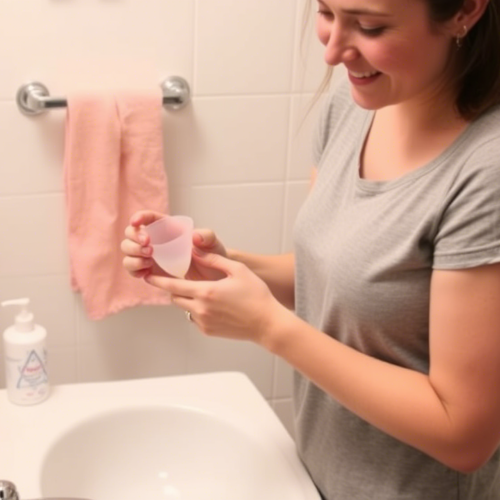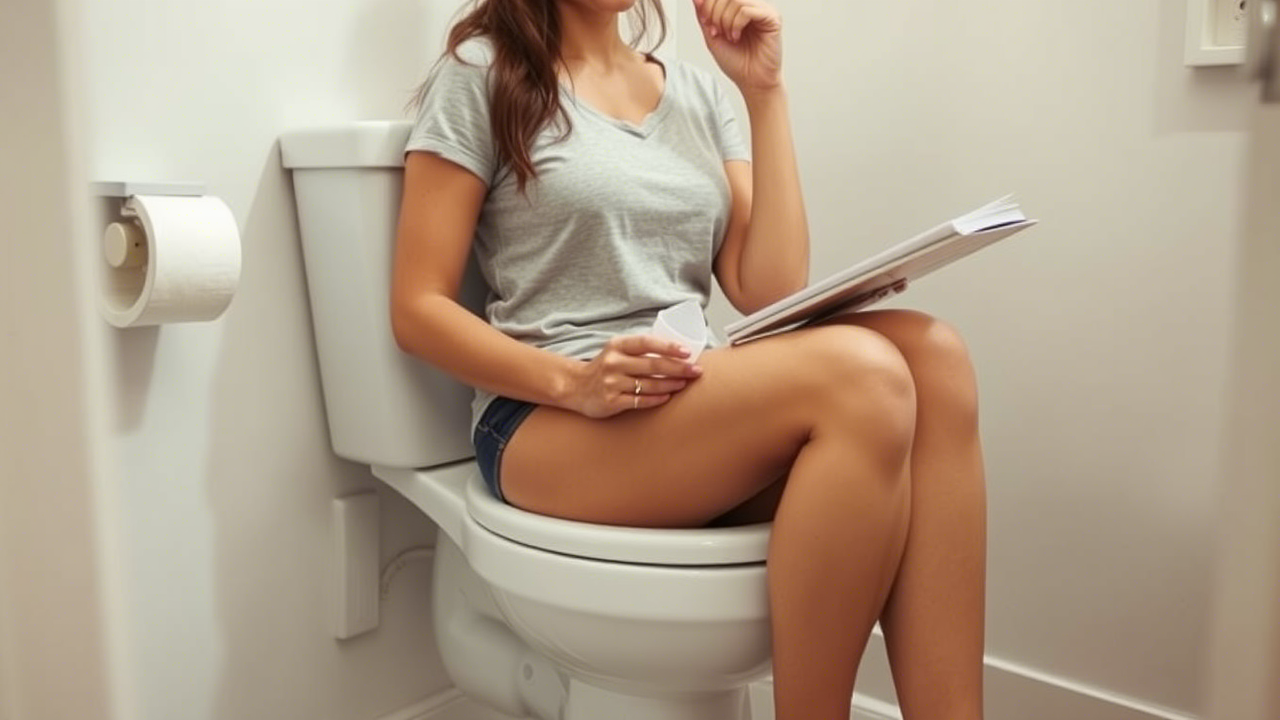Let’s talk real talk for a moment. The first time I held a menstrual cup in my hands, I stared at it with a mixture of determination and absolute terror. What was this silicone contraption, and how exactly was it supposed to go… you know, there? If you’re feeling similarly bewildered, you’re in good company—and I promise, it gets easier!
Why Learning the Right Technique Matters

Mastering menstrual cup insertion isn’t just about comfort (though that’s incredibly important!)—it’s about creating a proper seal that prevents leaks and gives you the confidence to go about your day without constantly worrying about period mishaps.
Before You Begin: The Essentials
Before diving into the step-by-step process, let’s set ourselves up for success:
- Clean hands: Always wash with unscented soap before handling your cup
- Clean cup: If it’s your first use, boil the cup for 5-10 minutes to sterilize
- Comfortable position: Find what works for your body
- Patience: Remember, this is a skill that improves with practice
Step-by-Step: How to Insert Your Menstrual Cup
Step 1: Find Your Fold
The fold is your secret weapon for comfortable insertion. Here are three popular options:
The C-Fold (or U-Fold) This is the most common beginner fold. Simply flatten your cup and fold it in half to create a C or U shape. It creates a moderate insertion point that works well for most people.
The Punch-Down Fold My personal favorite! Push one side of the rim down into the cup with your finger, creating a narrower insertion point. This tends to be the easiest fold for newcomers because it creates the smallest point of entry.
The 7-Fold Flatten the cup and fold one corner down diagonally to create a shape resembling the number 7. This creates a smaller insertion point than the C-fold but opens more reliably than the punch-down.
Step 2: Get Comfortable
Finding the right position makes all the difference. Try these options:
- Sitting on the toilet: Spread your knees wide and relax
- Squatting: The natural position that helps open your vaginal canal
- Standing with one foot elevated: Try placing one foot on the toilet seat or bathtub
- Lying down: Some beginners find this most comfortable for learning
Step 3: Relax and Insert
This is where deep breaths become your best friend:
- Hold your folded cup firmly with the stem pointing downward
- Gently separate your labia with your other hand
- Aim the cup toward your tailbone, not straight up (your vaginal canal angles backward!)
- Insert the folded edge first and guide the cup completely inside
- Once inside, release your grip to allow the cup to open
Step 4: Ensure Proper Placement
Your cup should sit lower than a tampon, with the stem just inside or slightly outside your vaginal opening (you can trim the stem later if needed).
Step 5: Create the Seal
This is the magic moment that prevents leaks:
- Run your finger around the base of the cup to check for folds
- Gently tug on the stem to ensure resistance (a sign of a good seal)
- If needed, rotate the cup by gripping the base and turning it 360 degrees
- Some find it helpful to do a few Kegel exercises to help the cup settle
Troubleshooting Common Insertion Challenges
“I can feel the cup when it’s inside”
If you can feel the cup, it’s likely sitting too low. Try pushing it higher, or consider a softer or smaller cup. Remember, when properly inserted, you shouldn’t feel it at all.
“My cup won’t open inside me”
This is probably the most common issue for beginners! Try these tricks:
- Insert the cup halfway, then rotate it before pushing it the rest of the way in
- Try a different fold method
- Run your finger around the rim to help it pop open
- Try inserting in a different position
“I’m having trouble getting it in comfortably”
A game-changer tip that changed my life: use water-based lubricant! Especially during lighter flow days when natural lubrication might be minimal. Just avoid silicone-based lubricants as they can damage the cup material.
My Personal Cup Journey
I’ll never forget my first three days with a menstrual cup. There may have been tears in my bathroom, frustrated sighs, and several moments of “maybe this just isn’t for me.” But I persevered, and by my second cycle, I had my technique down.
The turning point? Realizing that I needed to aim the cup toward my back, not straight up. That single adjustment transformed my experience from frustrating to freeing. Now, I can insert my cup in seconds without even thinking about it.
Beyond Insertion: Creating a Sustainable Period Routine
Once you’ve mastered how to pee with a menstrual cup in, you might be ready to fully embrace the menstrual cup lifestyle. The learning curve is worth it—most cup users report significant improvements in period comfort, environmental impact, and even reduced cramping.
Final Encouragement for Cup Beginners
Remember that inserting a menstrual cup is a skill that improves with practice. Be patient with yourself, and don’t hesitate to try different techniques until you find what works for your unique body. Within a cycle or two, you’ll likely be wondering how you ever lived without this game-changing period solution.
What insertion questions do you still have? Drop them in the comments below, and let’s help each other master the menstrual cup journey together!





